Power Consumption
Being this an ePaper display, it draws power only when the image is changing. When the display is in deep sleep mode, the datasheet gives a typical current draw of 1µA but it doesn't say anything about the power consumption during an update. The only thing it says is that the inrush current is 100mA. I guess that means that when the display comes out of reset and powers on it will draw up to 100mA, but that's not what I'm looking for, I want to know how much energy it takes to update the display.
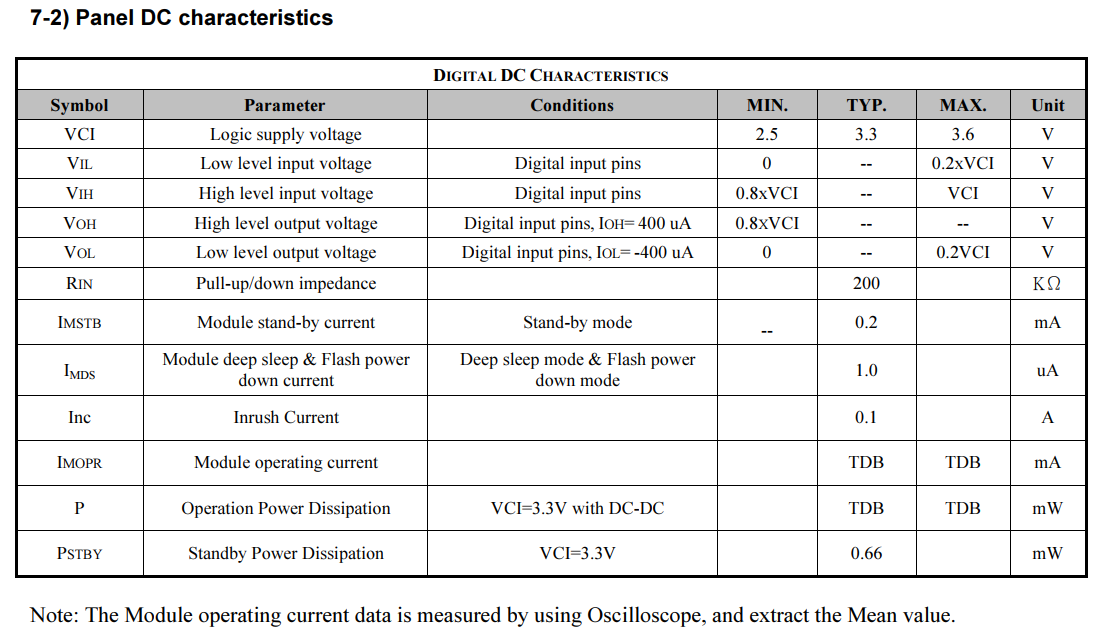
To measure the current waveform, as the display is updating, I put a small resistor in series with the power supply and measured the voltage drop with an oscilloscope.
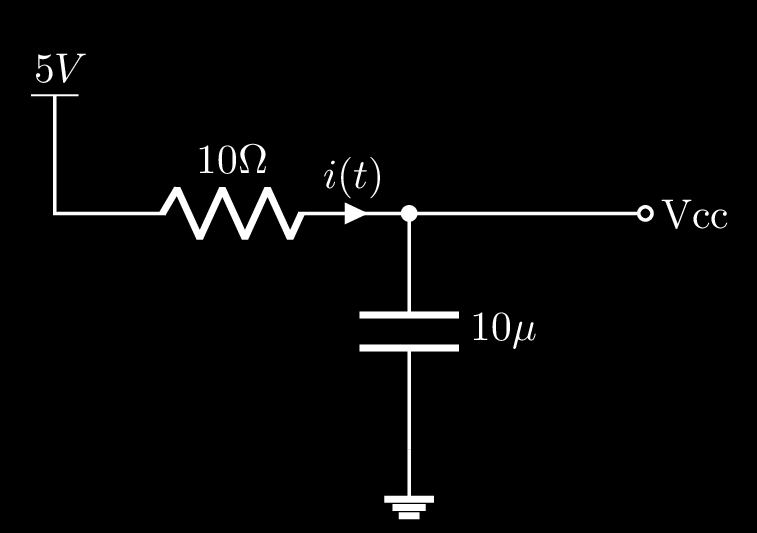
The diagram on the left shows the test circuit.
The datasheet specifies a typical inrush current of 100mA, with a 10Ω resistor the voltage drop will be 1V living enough margin. Plus having the resistance power of 10 makes the maths easier.
Energy is measured in Joules 1[J] = 1[W]*1[sec], to compute the energy is just a matter of integrating the power over time.
The breakout board for the display has an integrated LDO that regulates the input voltage to 3.3V. The quiescent current for the LDO is 130µA, it is so low that can be ignored, the current flowing through the resistor should be almost identical to that flowing into the display. In the final application, the display will be powred from 3.3V thus it is important to use 3.3V in the formula above otherwise we are taking into account the power that is dissipated by the regulator.
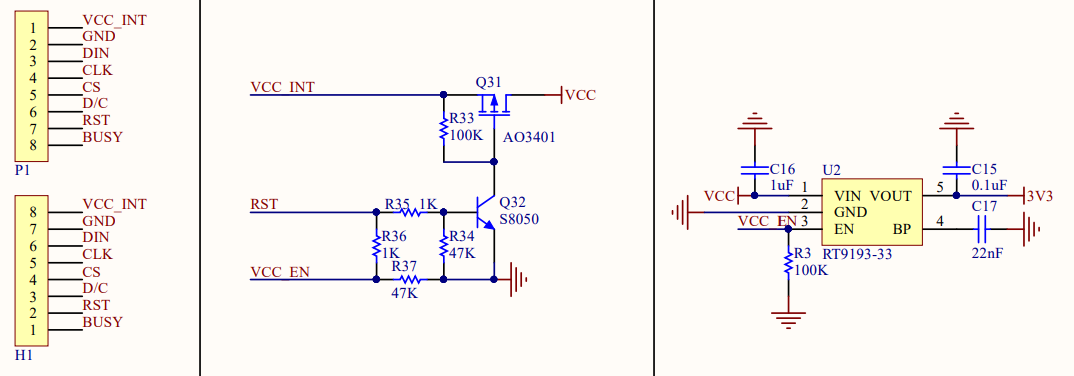
After connecting the oscilloscope I was able to capture some waveforms. Note that the scale is 20mA/div, I'm using a 1x probe across a 10Ω resistor, setting the probe multiplier on the oscilloscope to 0.1x makes it possible to read the current directly without conversion. It is also noted that the display draws current in bursts as it goes through the update sequence.

Here is a video showing the update sequence. It is noted that as the display updates, it goes through more than 7 colors. Maybe it's possible to modify the lookup tables to increase the available colors or to change the displayable colors. Sounds like a future project ;)
The datasheet specifies two test patterns, one for the typical and one for the maximum power consumption. To make it easy to display different patterns quickly, I wrote a simple command parser on the STM32 that listens for commands from the serial port and updates the display accordingly.

Typical Power Consumption
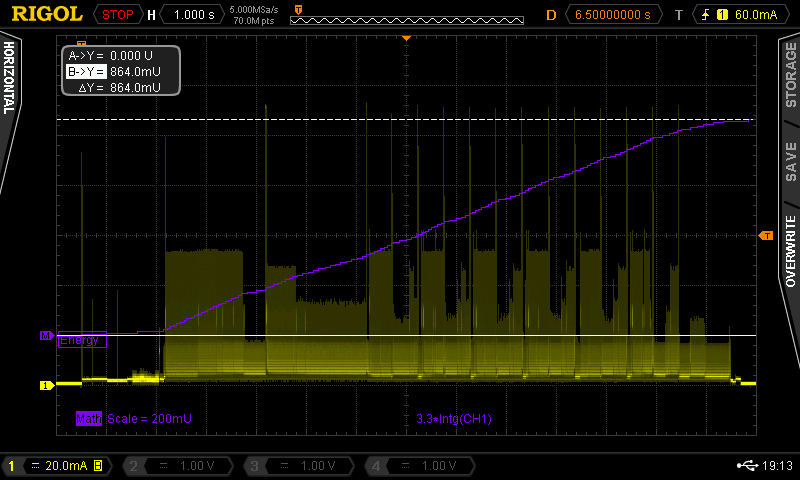
The typical power consumption is measured as the displayed image changes from full white to the colored horizontal stripes shown in the picture above. Using the maths function of the oscilloscope it's straightforward to integrate the current during the update cycle. Using the cursors the total energy required is determined to be 0.864J.
Maximum Power Consumption
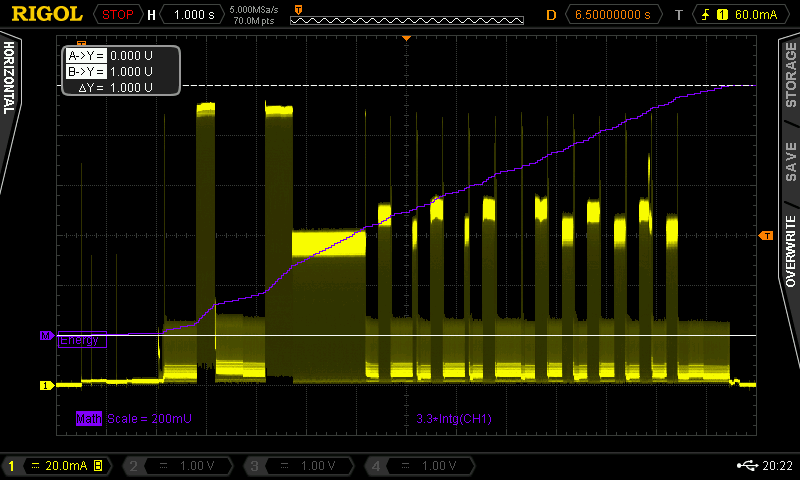
The maximum power consumption is measured as the displayed image changes from full white to a sequence of horizontal black and white lines. Applying the same procedure as above, the energy required is determined to be 1J.
Conclusions
The typical and maximum energy required to update the display are respectively 0.864J = 240µWh and 1J = 278µWh.
To wrap this up let's now roughly estimate how many update cycles we can get out of a battery. Since the rest of the circuit is not designed yet let's assume for now that the display is the only load. Let's also assume that we have a 2000mAh battery whose voltage is 3.3V. The energy stored inside the battery is
Since the display uses 1J for each update the total number of updates is 23760. The display will be updated once every 24 minutes so the total run time is 23760 * 24 min = 396 days. This is in the ideal case where only the display draws power and at least shows that this display is suitable for the project.
Next step will be to read from the SD-Card and display some pictures.
 Manuel Tosone
Manuel Tosone
Discussions
Become a Hackaday.io Member
Create an account to leave a comment. Already have an account? Log In.
If I updated it every minute, it would last 16.5 days. Updated every second, 6.6hrs. I've speculated if 1hz/1fps refresh rates would be acceptable for a word processor app. It might also be enough to power the display indoors using solar panels designed for 300nm wavelengths. Actually the refresh may take more than 1s so nevermind about 1s. I was thinking of a display like this, but not color: https://www.waveshare.com/6inch-HD-e-Paper-HAT.htm
this one is also interesting- 2fps refresh https://www.youtube.com/watch?v=BD4At2-e87E
Are you sure? yes | no